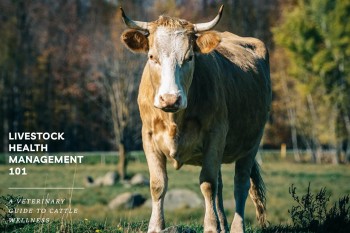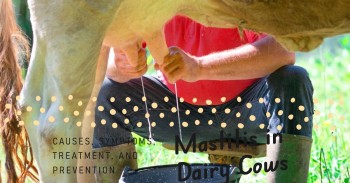Contagious Ecthyma: The Silent Threat to Goats and Sheep 🐐🐑
Contagious ecthyma, also known as
Orf, Soremouth, Scabby Mouth, or Contagious Pustular Dermatitis, is a highly
contagious and zoonotic disease that affects goats, sheep, and camelids. This
viral infection causes prominent skin lesions in affected animals. While primarily
affecting the skin, contagious ecthyma can also manifest in other body systems.
In this comprehensive blog post, we will delve into the etiology, epidemiology,
transmission, clinical signs, diagnosis, treatment, prevention, and vaccination
strategies related to this often-overlooked disease.
Etiology and Epidemiology
Contagious ecthyma is caused by
the Contagious Ecthyma Virus, a member of the parapoxvirus family. The virus
enters the goat's body through skin abrasions, particularly in areas prone to
damage such as the lips, face, ears, coronary band, scrotum, teats, and vulva.
Once inside, it replicates in proliferating keratinocytes, which are cells
found in the outermost layer of the skin. From there, the virus enters a
primary viremic stage, spreading to lymph nodes, bone marrow, and the liver. In
some cases, the infection becomes generalized, leading to a second viremic
phase, where the virus spreads to various body parts such as the head,
extremities, udder, genitals, lungs, and liver.
The disease has a global
distribution, affecting goats and sheep worldwide. Outbreaks are more common in
areas with high livestock populations and where animals are kept in close
proximity, such as farms, livestock markets, and shows. Young kids are
particularly susceptible, with morbidity rates often approaching 100%. While
mortality rates can reach up to 20% due to starvation and secondary infections,
they are typically lower.
The Contagious Ecthyma Virus can
survive in the environment for extended periods, especially in dry conditions.
Scabs that fall off during the resolution of lesions have long been recognized
as a potential source of infection for other animals, even months or years
later, if the environment remains dry. Recent studies have also highlighted the
role of persistently infected carrier sheep as a source of contagion. It is
reasonable to assume that carrier goats exist as well, and their infection can
be activated by stress.
Transmission and Spread
Contagious ecthyma spreads
primarily through direct contact with infected animals or contaminated
materials. Skin-to-skin contact, such as during breeding or social
interactions, is a common mode of transmission. Additionally, the virus can
persist on fomites, including feeders, water troughs, equipment, and bedding.
Insects, such as flies and mosquitoes, may also play a role in mechanical
transmission.
Humans can become infected
through contact with infected animals or their contaminated environments.
People handling affected animals, such as farmers, veterinary professionals,
and livestock workers, are at higher risk. The virus can enter the human body
through cuts, scratches, or other breaks in the skin. Therefore, proper hygiene
practices, including wearing gloves and practicing good hand hygiene, are
essential when handling animals with contagious ecthyma.
Clinical Signs and Complications
The incubation period for
contagious ecthyma is typically three to eight days. Initially, small red
papules appear, which rapidly progress into vesicles (fluid-filled blisters),
pustules (pus-filled blisters), and scabs. These scabs are often thick, crusty,
and proliferative in nature. While the lips are the most commonly affected
area, lesions can also develop on the face, ears, coronary band, scrotum,
teats, or vulva.
These scabs frequently harbor
secondary bacteria, such as staphylococci, which can cause additional
complications. In some cases, screwworm maggots may infest the scabs, further
exacerbating the condition. It is important to note that contagious ecthyma
lesions can be painful and uncomfortable for the affected animals.
Occasionally, large masses of granulation tissue develop under the scabs,
causing further distress.
Lesions usually regress within
three to four weeks, and most adult goats with lip lesions continue to eat and
produce milk normally. However, in certain circumstances, such as exposure to
other diseases or management deficiencies, young kids may develop generalized
lesions or severe secondary bacterial infections. Lesions on the teats of
milking animals can compromise the health of the sphincter and increase the
risk of bacterial mastitis. The associated pain may cause the doe to reject
nursing efforts by its kid, further complicating the situation.
Diagnosis and Confirmation
Diagnosing contagious ecthyma is
primarily based on clinical signs, particularly the characteristic appearance
of the lesions. However, other diagnostic methods can be employed to confirm
the presence of the Contagious Ecthyma Virus and rule out similar diseases such
as capripox infection.
Electron microscopy can be used
to visualize the virus particles in affected tissues or scabs. Immunologic
techniques, including immunohistochemistry and enzyme-linked immunosorbent
assay (ELISA), can detect the presence of viral antigens in the lesions.
Serological tests, such as the serum neutralization test or indirect ELISA, can
also be employed to detect antibodies against the virus in blood samples. These
additional diagnostic methods can provide confirmation and enhance the accuracy
of the diagnosis.
Treatment and Management
There is no specific antiviral treatment
for contagious ecthyma. However, supportive care and management strategies can
help affected animals recover and prevent further complications. It is crucial
to balance the potential benefits of treatment against the risk of zoonotic
infection when dealing with contagious ecthyma.
Topical treatment with antiseptic
solutions, such as kerosene mixed with lard or penetrating oil spray, can help
prevent bacterial contamination and promote scab softening. Systemic
antibiotics may be necessary if secondary bacterial infections become severe.
Additionally, applying an udder salve can help keep scabs on the teats pliable,
reducing discomfort and potential complications.
Prevention and Control
Prevention plays a crucial role
in controlling contagious ecthyma. Implementing biosecurity measures is
essential to reduce the risk of introduction and spread of the virus. These
measures include quarantining new animals, maintaining clean and disinfected
environments, and controlling insect vectors. Regular monitoring of the flock
or herd for signs of contagious ecthyma is important to detect early cases and
initiate appropriate control measures.
Vaccination is a highly effective
strategy for preventing contagious ecthyma. Commercially available vaccines are
typically unattenuated live virus preparations, essentially containing
ground-up scabs, or tissue culture strains. These vaccines induce an immune
response, leading to protection against the virus. Vaccination should be
carried out at least six weeks before the anticipated risk period, such as the
show season or introduction of new animals. Establishing a vaccination program
for all young kids, possibly in conjunction with annual revaccination of late
pregnant adults, is a recommended strategy to prevent and manage contagious
ecthyma effectively.
Contagious ecthyma poses a
significant threat to the health and well-being of goats, sheep, and other
susceptible animals. Its global distribution and ability to infect humans make
it a disease that demands attention. Understanding the etiology, epidemiology,
transmission, clinical signs, diagnosis, treatment, prevention, and control
strategies associated with contagious ecthyma is essential for effective
disease management. By implementing proper biosecurity measures, practicing
good hygiene, and prioritizing vaccination, we can protect our flocks and herds
from the silent threat of contagious ecthyma. Vigilance and collaboration among
farmers, veterinary professionals, and livestock workers are crucial in
controlling the spread of this highly contagious and zoonotic disease.
Together, we can minimize the impact of contagious ecthyma and ensure the
health and well-being of our livestock. 🚫🐐🚫🐑🚫


















